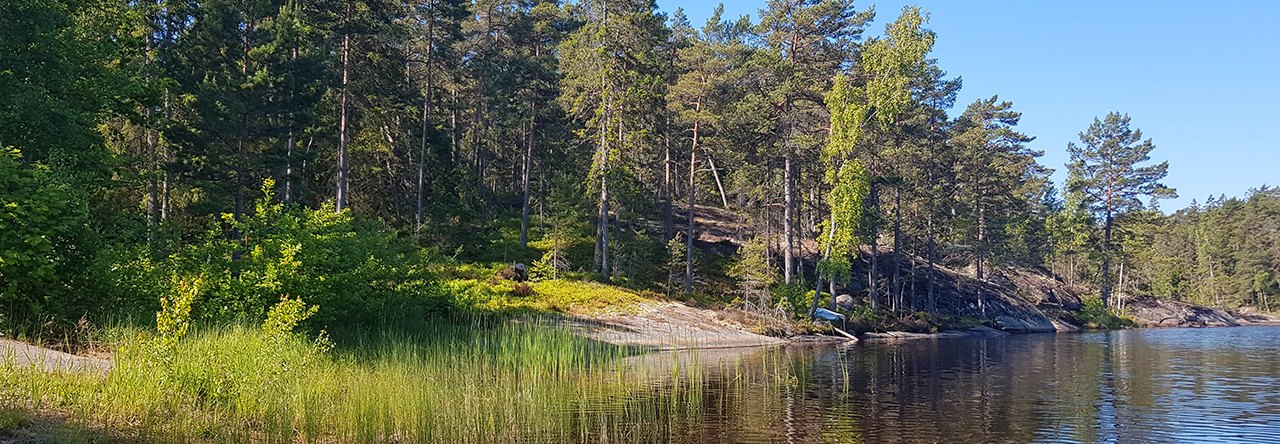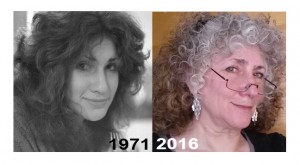Lately, the refrain from the Neil Young song Old Man has been circulating around in my head. “Old man, look at my life, I’m a lot like you were.”
A recent edition of the Kultur section in Dagens Nyheter (Stockholm’s morning newspaper) had an interesting article by Slavenka Drakuli, a Croation novelist who lives here in Stockholm, about how women’s aging is perceived and especially how women are writing about their own aging. It was a translated and shortened version of the longer English article by her at Eurozine.com. The original article can be found here.
Drakulic writes, “Only after my mother’s death at eighty-six, when I stopped being a child, did I start to think about my own aging.”
The words, when I stopped being a child caught my attention. While I must admit that I have been thinking about aging long before my mother died four years ago at age 85, it feels very true to me that only after she died did I feel like I was suddenly no longer a child – being forced to see that I was an adult, like it or not. Like Drakulic, I am now 60+ and what it means to be growing older, how to do it and what the physical changes that occur are, especially after experiencing my own mother’s illness and death, are topics I find myself often thinking of. I found her article very interesting and definitely worth taking the time to read in its original English.
My generation, the baby boomers, thought we were always going to be young – never growing old. But surprise surprise, like so many things we once thought, it turns out to not be true. The slogan, almost a battle cry really, “Never trust anybody over 30!” permeated the air at my college when I was 19 or so. To not be 30 anymore, or for that matter even 40 is almost like a surprise to me. And things will not be getting any better. The internet is filled with consolatory comments like 50 is the new 40 – designed to make us feel like we aren’t really aging. And perhaps it’s not the aging itself that is the problem. The important thing is that we don’t look like we are getting older. That is the lesson we are taught when 50 year old actresses work so hard to look like they are 30. And Jane Fonda at 75+ looks (with a bit of help) like 50+. We are made to feel like that should apply to all of us. But for most of us it is not really a reality.
I live in a city – the kind with subways and buses and sidewalks. Not the type of city where one drives everywhere – encased in a bubble – protected from contact with other people. In my daily life in that city, I see all sorts of people, many of them my age or older. I find myself watching them, almost greedily, looking to see signs of aging on them. To see what it looks like. To see how they walk, how they sit, do they look confused, tired, in pain. So that I know what to expect – what my future is. Because to be getting older is the only direction I’m going. Unless of course, I don’t.
I also look at all the younger people that are riding the buses and subway cars with me: so full of hope and optimism. And that’s where the Neil Young song comes in. Because I look at them with their young bodies and long futures ahead of them and think to myself, “I used to be a lot like you are.”
While Young’s song is sung to an old man, I think it applies equally well to us aging women today. Drakuli says that when she was looking for articles or stories by women about aging she found very little written. Most of what she found was self-help information about how to look better. Women weren’t talking about aging. But when she changed her search parameters to include Alzheimer’s disease or memory loss, there she found what she was looking for. Because women weren’t, at first glance, discussing aging by the way it affected their physical bodies. They were coming at the topic by first describing the experience of memory loss, of losing one’s sense of self. Describing their mothers or aunts or sisters or themselves. And in the descriptions of the progressive loss of the sense of who we are, also comes the descriptions of what is happening to our aging bodies. When I was 19, to me, an old lady was someone with short permanented, curled hair and wearing a proper wool suit; good jacket to the hip and a just below-the-knee length skirt. Unless of course they lived in Florida and then they had bluish, curled hair and wore polyester. But now members of my generation have become the old ones and the signature outfit of my fellow baby boomer ladies is more likely to be a pair of blue jeans and a denim shirt worn with natural color hair, sometimes still down past the shoulder.
There were a whole lot of us baby boomers born during the years after the second world war between 1946 and 1964. According to what Wikipedia says of us, we tended to think of ourselves as a special generation, very different from those that had come before. Because of our numbers we were everywhere and influenced everything. But we are no longer young and hip and oh so cool any more. But as I wander through my adopted city of Stockholm I see us everywhere still. Alongside of all those hipsters who have invaded Södermalm and now even my neighborhood of Hornstull, are all these aging baby boomers, often still well-dressed while pulling their shopping carts into the Hemköp grocery store, waiting on line for the next available druggist at the Apotek to fill their ever growing list of prescription meds that keep them going. They wander though H&M looking for a new top or pair of pants. And they come in all shapes and sizes, the boomers that is, not just the pants. They may not always walk as fast and steady as they once did but they still push their way through the crowd. The lines on their faces show they have lived a life. Their hair colors may have faded but they are still very much visible. And these baby boomers are still my demographic. They belong to my age box as they did even when I was 19.
In just about a week I will be turning 65. I consider myself, so far, still fairly well preserved. I’m still 6 feet tall so still get noticed wherever I go whether I want to be or not. My hair is still curly though no longer its original auburn. I admit I am no longer as thin as I once was and the dressing room mirrors in H&M are a rather unpleasant reality check. My knees hurt more and more, not just when going up and down stairs. My joints creak, my feet hurt and I no longer run to catch that bus. But I still remember what to do with that key even though sometimes I can’t remember where I put them. And most importantly, I am not invisible! I was in the make-up section of a department store recently. I asked the very young sales clerk (she must have been all of 20) where they kept or even if they had black kohl eyeliner. She found something for me that had black on one end and white liner on the other. Then she started to explain what the white pencil was for. There is lots of talk these days of Mansplaining but I realized that I was getting Youngsplained! I looked at her and said, “I’ve been putting on makeup way before you were born. I know what this is and I know what to do with it!” I said it with a smile. I hope I didn’t intimidate her too much. But its always nice to be reminded that I am still what I once was.
Here is Neil Young singing Old Man when he was a young man.
Here is Neil Young singing Old Man when he had become one himself.


Håkan
Great piece wifie, and thanks for the wonderful music.
See ya’